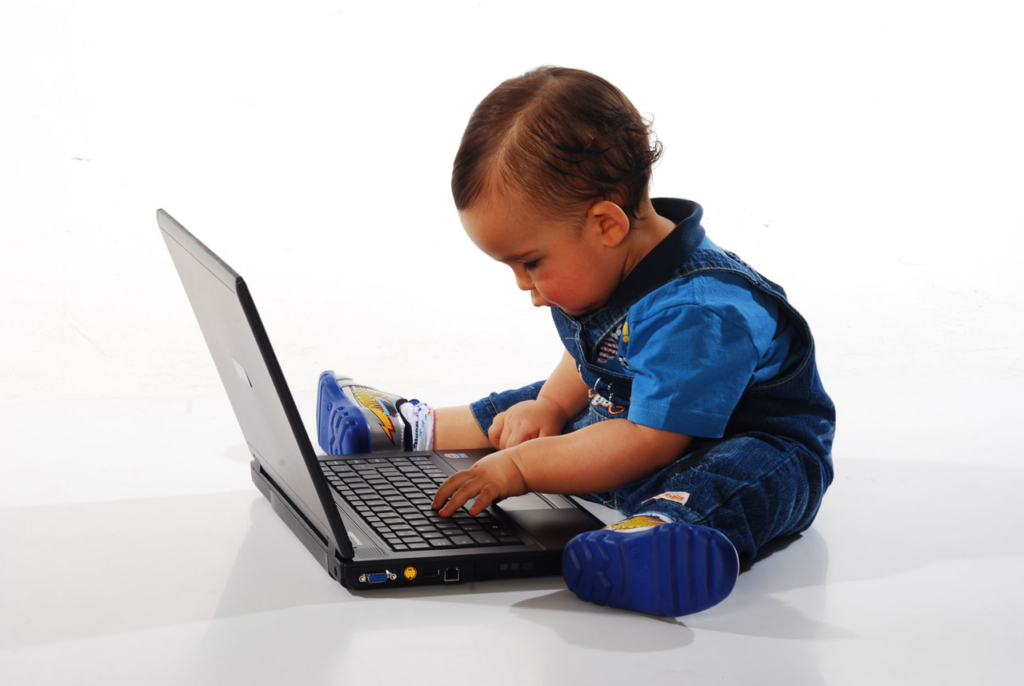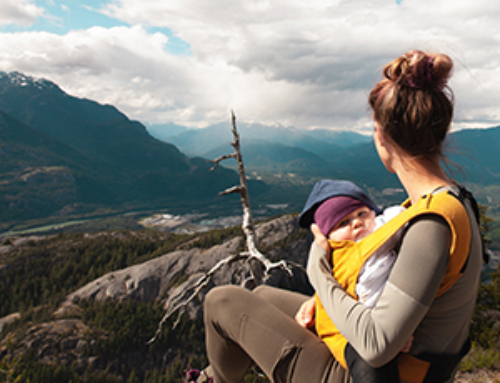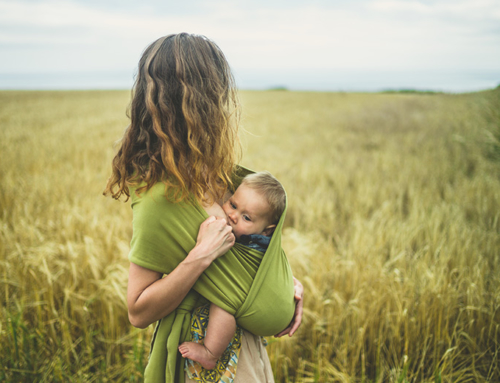
Credit: http://www.sitenoar.com/
Modern parenting seems to be difficult for many people across many ages. Starting in infancy, we have parents that are tired, burned out, frustrated, and simply not enjoying having this other person to care for. I have met many a parent who said they hated the baby/toddler stage and couldn’t wait to get out of it to more of the childhood stage. Colic, the ‘terrible twos’, and so on are all ‘problems’ that many families face and struggle with. We also face frustrations in efforts to eradicate or limit certain health issues. Take SIDS for example. We have spent the better part of 25 years trying to eliminate these horrible deaths, but outside of a jump with the back-to-sleep campaign, little has changed.
The example of deformational plagiocephaly
A recent article in Evolution, Medicine, and Public Health on the issue of deformational plagiocephaly (‘flat head’) is interesting not only in it’s own take on the issue, but of the issue of how the evolutionary mismatch theory may explain so many of our modern problems. The article – by Drs. Herbert Renz-Polster and Freia De Bock – addresses the issue of how the supposedly safest sleeping position – supine – could result in a misshapen head. For those that don’t know, the misshapen head is thought to be important from an evolutionary perspective as the head of an infant is one of the features that endears us to the child to ensure appropriate care. Our babies are physically cute so that we don’t stop caring for them when it gets hard and elicits care from individuals other than the mother. A misshapen head could affect this by having the child viewed as ‘defective’ or simply just not cute enough. Thus, if supine sleep is the ideal and so is a round, adorable head, we have competing evolutionary interests and this is a problem to be solved.
Hopefully you can see how this particular case is one that is ripe for exploration from an evolutionary standpoint and can serve as a model for this idea of an evolutionary mismatch theory. Let us start with the prevailing opinion that deformational plagiocephaly (“DP”) is a result of supine sleeping, that it is a cost to keeping our babies safe. Like much of modern parenting, this is a case of looking at the easiest and most direct explanation and running with it. It is also a case of ignoring the issue of DP as one not worthy of further exploration if indeed it is simply seen as a cost of safe sleep.
The first issue is that the evidence doesn’t back it up. As the authors discuss, less than half of the studies that have examined DP have found supine sleep to be a predicting factor. So right at the start we have a theory that sounds nice that isn’t actually supported by the evidence (like the efficacy of sleep training or the idea that weaning will increase solid food intake). This first issue is crucial because if DP is not some ‘side effect’ of ‘safe sleep’ then it’s something we should be concerned about given the social ramifications of it for infants.
This brings us to the issue of evolutionary interests. That round head matters. Given that the evidence doesn’t support an independent link to supine sleep and it doesn’t make sense from the context of competing evolutionary interests, what should we look at? The authors take the approach of looking at it from an evolutionary mismatch perspective. That is, DP isn’t a medical disorder, but rather a by-product of a biological-environmental mismatch; it is a cost or side effect, but not of safe sleep, rather of modern caregiving practices more generally. An examination of feeding practices (i.e., bottle-feeding), how we move babies around (i.e., strollers versus baby wearing), and infant sleep (i.e., supine in a crib versus a mix of side-laying and supine while breastsleeping as well as more active sleep during cosleeping which results in more movement) provided by the authors makes a strong case for how our current practices result in DP, but also how they differ from what children biologically expect. When compared with the supine sleep hypothesis, we see that actually supine sleep on it’s own is not a reasonable explanation as babies have always spent some time sleeping supine. However, when taken in consideration with other caregiving practices, we can see how too much time with gravitational pressure on the head can result in DP.
Although this particular article was a review and thus didn’t include a direct examination of the theory, a review of the research does support this with studies finding that bottle-feeding (especially fixed feeding positions) and car seat use for sleep are both predictors of DP. No study has looked at cosleeping versus solitary sleep, but given some studies do identify supine sleep as a predictive factor, it is possible that this reflects this ‘third variable’ of a combination of practices. Obviously more research is needed into this particular area, but now I want to discuss what this means more generally.
Applying this theory to other areas
When we look at some of the other areas I spoke about at the start, we can start to consider how this evolutionary mismatch may be at play. Think first about the overwhelming fear and response to broken sleep that is common in today’s society. If we think about it, our children’s sleep shouldn’t be so broken naturally – that wouldn’t work for us as a species. However, in a society that is unsupportive and has expectations well beyond what infants are biologically capable of, we can see how this could become a problem. The biological norm for sleep is breastsleeping in which the infant and mother share a sleep space and the infant nurses on demand during the night. Mom does not get up to nurse, but rather side-laying nursing is common. I should note here that being a biological norm does not mean that all humans have followed this pattern throughout history, but rather this is the species-typical behaviour. Mothers who breastsleep often report better quality sleep than their counterparts and thus function better without other forms of parental intervention at night. For those that are not breastfeeding, even keeping baby close via side-cot can improve sleep overall as part of this seems to be baby ensuring she’s safe and close to a caregiver.
Interestingly, our society has focused exclusively on parental leave as the solution to many of the problems of early parenting; however, although this can alleviate some of the stress and burden, it is only because of other environmental mismatches with human behaviour, such as having people work full-time out of the home. Mothers in traditional societies often have a period of rest and then return to work, but their work is qualitatively different than that expected in our society. Farming and foraging are common traditional jobs for women and they allow for breaks for infants to feed and to keep an infant close (when possible) or the social network is structured that baby can be cared for and kept safe by others. There is no need for an extended break to raise a child; in fact, raising the child is part of the everyday fabric of life. Thus our solution for one evolutionary mismatch is to try and overcome a second evolutionary mismatch.
If we look at SIDS rates, we just need to look to the work of Dr. James McKenna who has spent decades researching the possibility that sleeping in close proximity serves actually to assist babies when done safely. This last bit about safety is often where we see problems because many of the things we use in our society are not adapted to infant use. Soft bedding, big duvets, and so on are all safety hazards for infants, as are high rates of substance use and tobacco use. And of course poverty is intertwined with all of this as well as the higher stress that accompanies living in poverty and these are the babies in a wealthy, non-egalitarian society who suffer most. Yet once again, our culture has focused not on systemic issues that contribute to child health, but isolating factors – like bedsharing – that are a product of the very evolutionary mismatch that may give rise to the original problem. How can bedsharing on one hand be protective and on the other a risk to a child’s life? It can’t. It can only do so if we are looking at it through two different lenses, that of our culture and the environmental considerations that make it unsafe and that of our biology that makes it safe.
When we look at these issues (and there are many more we could examine), it becomes clear that our cultural desire to pigeonhole topics and focus on the most proximal possible cause is failing our children and our families. If we want to help families – both health-wise and socially – then we need to start considering our evolutionary heritage and how we may be moving too far away for optimal development. At a personal level, when you find yourself struggling with parenting, step back and try to determine if you can see where the problem lies – is there really a biological problem or is this a case of an environmental-biological mismatch? Doing that may help you solve many of your parenting problems.
Relevant References
Renz-Polster H, De Bock F. Deformational plagiocephaly: the case for an evolutionary mismatch. Evolution, Medicine, and Public Health 2018; 2018: 180-185.
McKenna JJ, Gettler LT. There is no such thing as infant sleep, there is no such thing as breastfeeding, there is only breastsleeping. Acta Paediatrica 2016; 105: 17-21.
Bartick, M. & Tomori C. (2018.) Sudden infant death and social justice: a syndemics approach. Maternal & Child Nutrition. https://doi.org/10.1111/mcn.12652
Rudzik AEF, Ball HL. Exploring maternal perceptions of infant sleep and feeding method among mothers in the United Kingdom: a qualitative focus group study. Matern Child Health J 2015; DOI: 10.1007/s10995-015-1798-7
Blair, P. S., Sidebotham, P., Pease, A., & Fleming, P. J. (2014). Bed‐sharing in the absence of hazardous circumstances: Is there a risk of sudden infant death syndrome? An analysis from two case–control studies conducted in the UK. PLoS One, 9(9), e107799. https://doi.org/10.1371/journal.pone.0107799
Blabey MH, Gessner BD. Infant bed-sharing practices and associated risk factors among births and infant deaths in Alaska. Public Health Reports 2009; 124: 527-34.
Kendall-Tackett K, Cong Z, Hale TW. The effect of feeding method on sleep duration, maternal well-being, and postpartum depression. Clinical Lactation 2011; 2: 22-6.






Leave A Comment